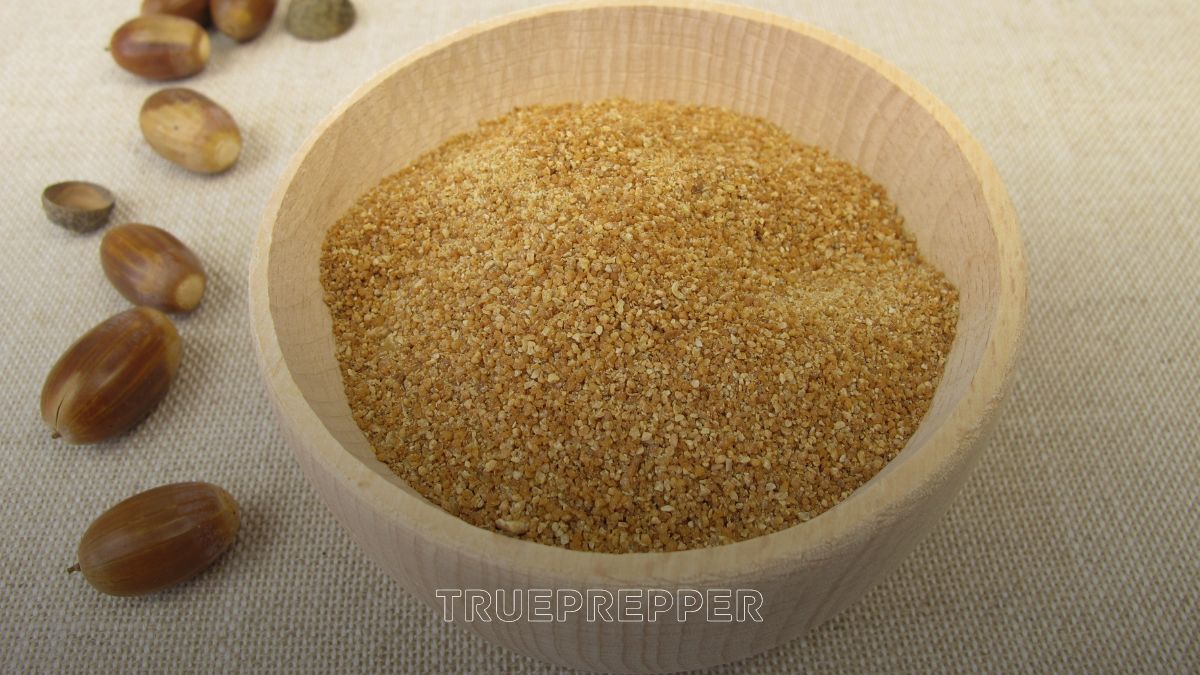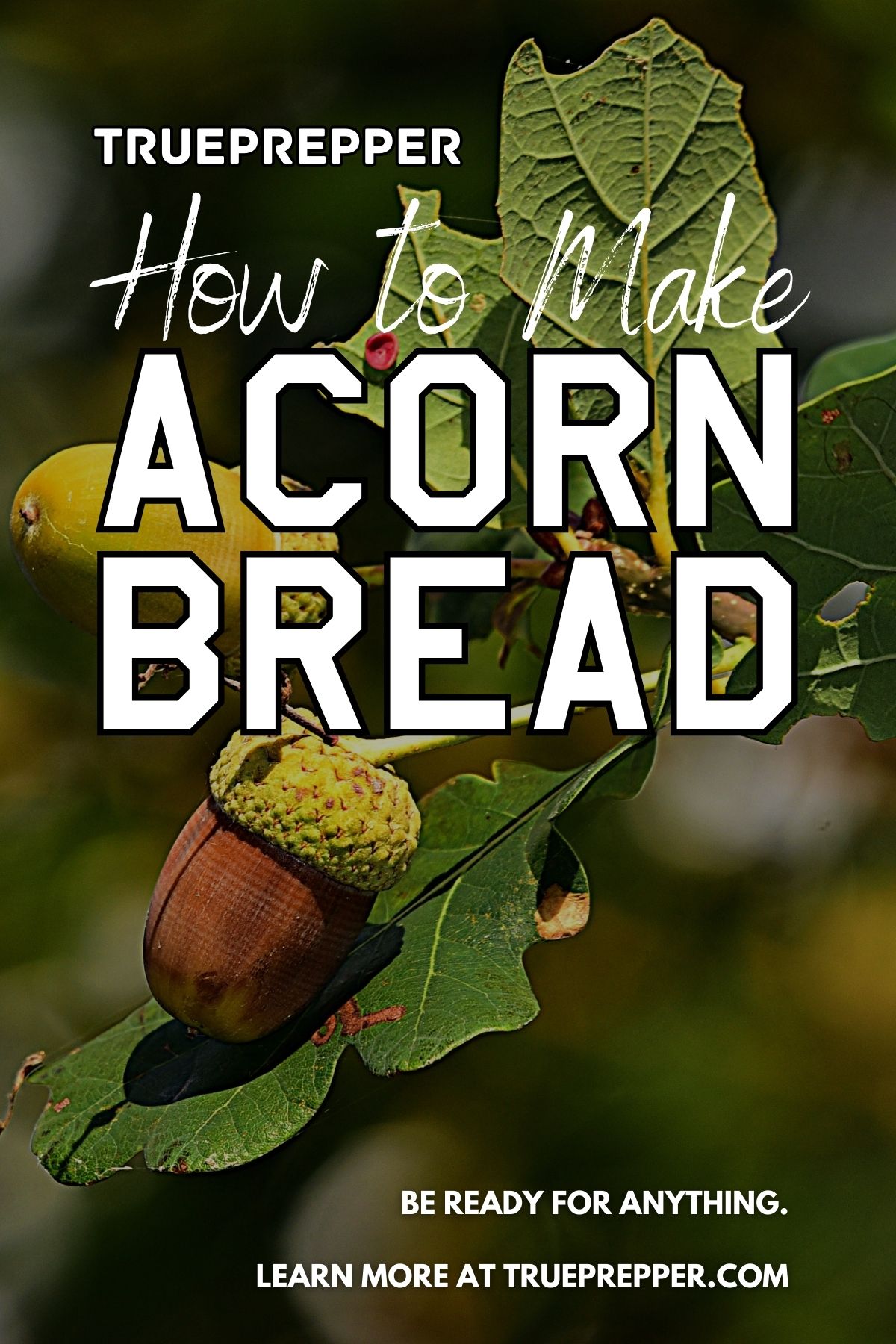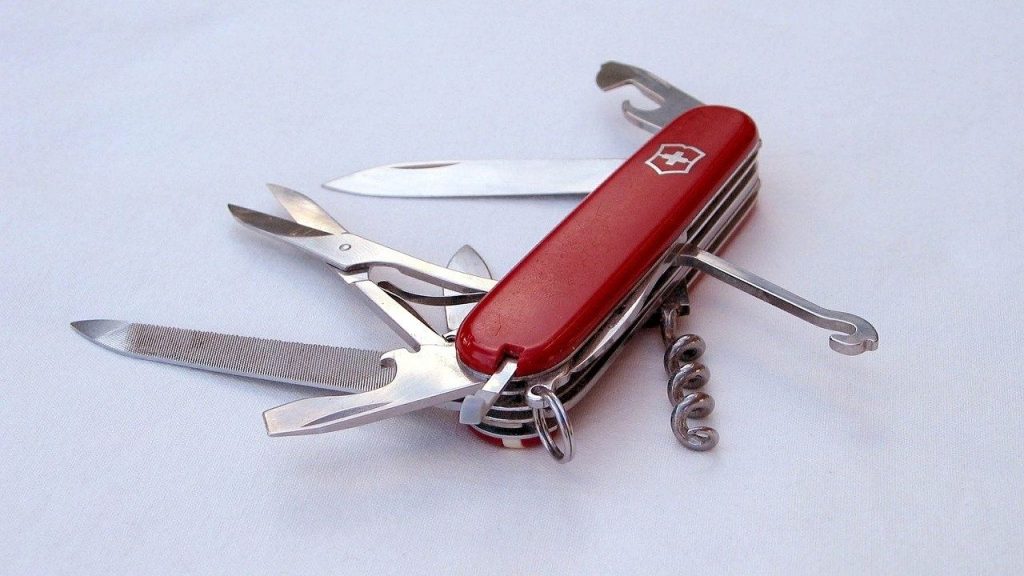A large oak tree can produce 1000 pounds of acorns each year. So
what can we do with these? We can make acorn bread! First, we will share how to
prepare acorns to eat by leaching out the toxic tannic acid. Next, you will see
how to make acorn flour with the processed acorns. Last, we will cover how to
make acorn bread – a delicious survival staple.
Resourcefulness and knowledge can give you a leg up in any
survival situation. Many would pass by acorns, assuming that they are poisonous
and inedible. Acorn bread is a smart way to make these seemingly useless nuts
both useful and tasty.
Contents (Jump to a Section)
- The History of Acorn Bread
- The Best Edible Acorns
- Preparing Acorns to Eat
- How to Make Acorn Flour
- Acorn Flour Recipes
- Acorn Bread Recipe Ingredients
- How to Make Acorn Bread
- Survival With Acorns
The
History of Acorn Bread
Edible ‘weeds’ surround us; not just in the wild but also in our own backyards. We have lost touch with many of the plants that used to sustain us. The little acorn falls into this category.
It is certainly not a weed, and it is not a poisonous nut like many people assume.
The colonists adapted Native American acorn bread recipes during the 17th century. The recipe was common until the mid-19th century, especially with the working class.
Sam Thayer, a well-known foraging expert who specializes in acorns, explains what makes the acorn special:
“There is no food that means more to me than the acorn, for the acorn fulfills both a promise and a fantasy: that the forest will provide for me. When I gaze across the [valley] I see more than scenery. I see thousands of acres of bounty, millions of pounds of delicious food dropped from the crowns of countless trees, waiting to be gathered by eager hands. I see more food than I could ever eat—more than I can even fathom. A wilderness and an orchard in one.”
Acorns have been a staple
for civilizations around the globe for thousands of years. Their abundance and
nutritional value make it easy to see why.
The Best
Edible Acorns
Hundreds of oak species exist around the world. About 90 of those
are found in the United States. Each one of these types of trees drops a
different flavor, size, and shape acorn. The flavor differences are largely in
part to the tannin content, which makes them more or less bitter.
Tannin is an antioxidant but is ridiculously bitter and even toxic in high quantities. Acorns have high quantities of tannin, so this presents a problem. Luckily, acorns can be leached in water to reduce their tannin levels.
The type of oak tree can have a wide-ranging effect on the tannin levels. The red oak acorn has a tannin content of a whopping 20.3%. A white oak species acorn, on the other hand, has only 0.4% tannin. These large content differences mean you will need to leach the red oak acorn several more times than the white oak to reduce the tannin levels.
Besides tannin levels, the size of the acorn and the bounty that
the oak tree produces can factor in. It is much easier to get a large acorn
bounty off a burr oak than a white oak. The acorns are larger and more
plentiful, meaning you can spend less time gathering the nuts.
Preparing
Acorns to Eat
The first step is to check your acorns to make sure they are in good condition. Wormy, cracked, shriveled, and moldy acorns need to be tossed out.
Some foragers suggest floating the acorns. Good acorns typically drop to the bottom (they are heavier than water). Caps, wormy acorns, and acorn pieces will usually float.
Next, remove the shell from the acorns. Young acorns are easiest to shell just by cutting through them. Late acorns may require a nutcracker- but most shells are thin and brittle making them easy to crack.
After cracking, you will need to do the meticulous task of sorting. Sorting all of the nutmeats out takes some time, but is easier if you shelled them well. Sorting is as simple as picking out all the meat and discarding the caps, shells, and other debris.

Acorns are notoriously bitter. Tannic acid causes this bitterness, and you can leach out the acid by boiling acorns in water. The tannic acid will turn the boiling water brown, and you can continue to boil the acorns until the color is no longer removed. This is one of the most important steps because too much tannic acid not only tastes bad, but it can also make you sick.
The boiling process can take anywhere between 30 minutes to 3
hours, depending on the tannin content. You can taste-test the acorns during
the process or just
The next step to make acorns much more edible is to roast them. Using a warm oven (250 degrees), roast them in the oven for at least 60 minutes. Once they are roasted, you can use acorns as a substitute for many types of nuts in almost any recipe. They can be glazed, garnish, added to soup, and most importantly: ground up into flour.
How to
Make Acorn Flour
Before you go on making full-blown acorn bread, you will need to
make the flour. Acorn flour is gluten-free and super versatile. It behaves very
similar to wheat flour and can be substituted in baking recipes for up to half
of the all-purpose flour.
You will need about two pounds of acorns to make three cups of
acorn flour. Even if you do the math beforehand, always have more acorns than
you think you need in case you need to throw a few bad ones out.
A blender or food processor makes the first step of going from nut
to flour easier:
- Toss the prepared acorns into the blender to fill it 1/3 the way.
- Blend the acorns up until they look like flour.
- Empty into a container and repeat for the rest of your acorns.
If you don’t have the luxury of having a blender or food processor, you can always use rocks to grind the acorns into flour like Native Americans once did.
Acorn
Flour Recipes
You can use acorn flour for up to half of the all-purpose flour in
almost any recipe. That means you can make porridge, pancakes, and even
cupcakes! You can use it to make hardtack survival bread.
Acorn flour is a drier flour, so be prepared to add a little bit of extra moisture to the recipe as needed. It is better to compensate more than you might expect since it is so dry.
Acorn
Bread Recipe Ingredients
One loaf of acorn bread takes 50 minutes to prepare and cook. This does not include the time to prepare the acorns and turn them into flour, which can take up to three hours. The ingredients you will need to bake the bread include:
- 1 cup acorn flour (see above section,
preparing acorns to eat) - 1 cup all-purpose flour
- 2 tablespoons baking powder
- ½ teaspoon salt
- 3 tablespoons sugar
- 1 egg beaten
- 1 cup milk
- 3 tablespoons oil
Substitutes can be made in a pinch for some of the ingredients, but the acorn flour is very dry so try to keep the liquid-to-solid ratio the same.
How to
Make Acorn Bread
Once you have gathered all of the ingredients, you can get cooking
in eight easy steps:
- Turn on Oven: Preheat oven to 400 degrees
- Grease Pan: Grease a loaf pan to prevent sticking
- Combine Dry Ingredients: Combine acorn flour, all-purpose flour, baking powder, salt, and sugar in a bowl
- Combine Wet Ingredients: Combine egg, milk, and oil in a bowl
- Stir Together Wet and Dry Mixtures: Stir the wet and dry bowls together to create a lumpy batter
- Pour into Pan: Pour the lumpy batter into the greased pan
- Bake: Bake at 400 degrees for 30 minutes
- Remove and Cool: Remove the pan, turn off the oven, and let cool
This simple recipe results in an earthy yet subtle flavor and unique texture. An adapted recipe hundreds (if not thousands) of years old shouldn’t be that difficult to make- so we kept it simple.
This instructional video from 1933 (silent and in black and white) shows the traditional Native American way of making acorn bread:
Survival
with Acorns
Acorns are abundant but also passed over as food. People assume that they are poisonous and nothing can be done about it. Just a little knowledge about acorns can give you access to a high-fat, protein, and antioxidant-rich food source. Gather up acorns as others ignore them, knowing that leaching them of the tannin makes them very edible and nutritious.
In a survival situation, you may not have all the tools and ingredients above to make an acorn bread loaf. You will need to improvise with campfires, pans, and rocks instead of blenders, and substitute ingredients.
The kitchen may not be where you are best (it is certainly not my forte), but it is always best to be learning new facts and skills. Something as simple as creating acorn flour and survival bread with that flour could help you learn a new skill.
As we mentioned earlier, acorn bread originated as a Native
American recipe, but acorns were actually a major food source for some tribes
in what is now California. Acorn bread was just one way to eat an acorn; they
would also make:
- Soup
- Porridge
- Griddle Cakes
- Biscuits
- Traditional Venison Acorn Stew
They had sixteen different types of oak trees to get acorns from
in the region, so acorns were plentiful and varied in taste.
One tribe, the Yokut, was estimated to consume up to 2,000 pounds of acorn in a year per family.
Acorns make for an excellent survival food because an acorn meal’s base composition, it is:
- 62% carbohydrate
- 21% fat
- 14% water, minerals, and fiber
- 5% protein
This balance is more than enough to be the main component of a
survival diet- just as Native Americans have already done.
The Final
Word
Acorns are completely edible and can even be tasty, as acorn
bread proves! Native Americans have been using acorns to make bread for
hundreds of years. It is even easier today with our modern tools, but it is
always nice to know that it can be done without modern tools.
If you are looking for more bread recipes, check out our hardtack survival bread recipe. It makes for some tough eating, but you just can’t beat the shelf life.
You've Been Missing Out
Join the 2+ million preppers that rely on our prepping advice by subscribing to TruePrepper.
- Practical guides and tips
- Useful survival giveaways
- Free, forever
- < 0.4% of people unsubscribe
Thanks for subscribing, reading, and welcome to the club.

The post How to Make Acorn Bread appeared first on TruePrepper.
—————————————————————————————————————————————————————————————–
By: Rusty Collins
Title: How to Make Acorn Bread
Sourced From: www.trueprepper.com/acorn-bread/
Published Date: Sat, 16 Sep 2023 11:42:26 +0000

